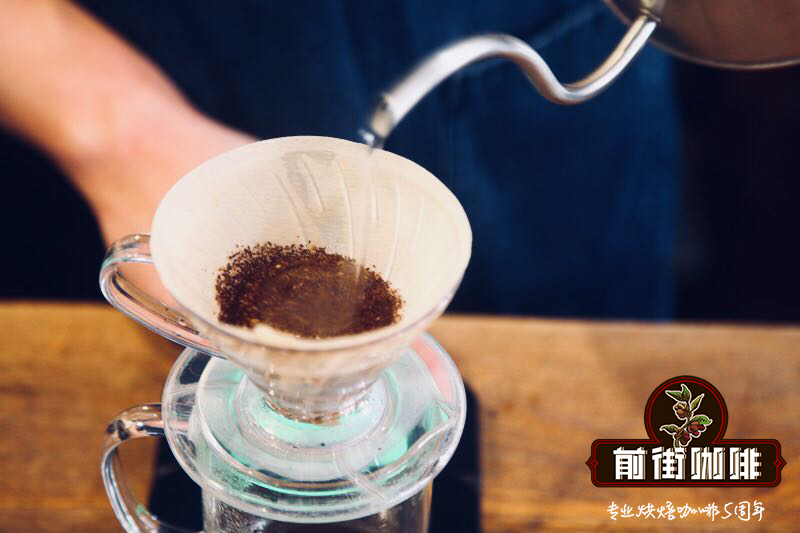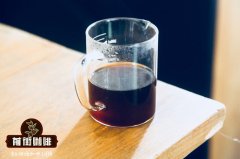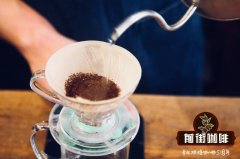What is Japanese iced coffee? What's the difference from American iced coffee? The method of making Japanese iced coffee

Professional coffee knowledge exchange More coffee bean information Please pay attention to coffee workshop (Weixin Official Accounts cafe_style)
Iced coffee and cold extract the difference between cold extract, iced and iced coffee which is better to drink?
Yesterday I saw an article on the Internet introducing the preparation method of "Japanese iced coffee".
Why is it called Japanese iced coffee?
I don't know.
However, this method of making iced coffee should have been thought about by everyone.
This is exactly the same as the hand flushing method, the difference is that the ice cubes can be placed in the heat resistant pot first.
This method is similar to the concept of "iced coffee" I sent, but the melting speed and flavor ratio are not the same.
……
If you are not a coffee drinker or have a light taste, this method should work for you and the steps are simple!
Prepare/
Coffee powder, water, ice cubes and the hand brewers you know.
Assuming I want to make 20 grams of powder, the powder-to-water ratio is 12, and it takes about 280ml of water to make coffee.
At the same time, prepare ice cubes of about 280g.
……
The article I read recommended ice cubes equal to the amount of water "1:1", but I was afraid of too much ice so I reduced it to 150g.
The introduction of this article is "water 250ml+ ice 150g" experience, the ratio of water to ice is "5:3".
Start/
step1. Prepare the rinsed filter paper, place the coffee powder in the filter cup, and then put 150g ice cubes in the heat resistant pot. This was the state where he could directly prepare the tea.
step2. Water temperature setting. You can set the temperature a little higher, the taste will be more obvious. Because at this point, whether it's 82 degrees or 92 degrees, the ice melts quickly and it's frozen just the same.
step4. When you reach the set temperature, start brewing the way you are accustomed to.
During the process, you will hear the pleasant sound of ice melting, which is really a whining wah-wah-wah-wah-very cool feeling.
When it's finished, it's finished.
The photo shows signs of dew condensation immediately after brewing, which means you can enjoy iced coffee immediately after brewing.
What's your experience?
If you compare it to the previously published "iced coffee."
"Japanese iced coffee"
Advantages: The steps are the simplest, and it immediately becomes an iced coffee state. Melting sounds good when brewing. The visual effect is in one go, suitable for picking up girls. I'm just saying that.
Disadvantages: taste lighter, currently known only this disadvantage.
However, if the ratio of water to ice is "5:3", I think it is suitable for light taste or reception of guests.
This is where the shade stops, and then even if the remaining ice melts, it doesn't get any lighter.
"Iced coffee"
Pros: Stronger taste. The ice dissolves less and the layering is obvious.
Disadvantages: More troublesome, but also easier to return to normal temperature.
The effect of this punch was the same as that of "hard liquor + ice cubes".
At first enough ice taste, but put a long time, the feeling of fading is more obvious.
Innovation of Craft and Brewing--Difference between Starbucks Nitrogen Cold Coffee and Cold Coffee
Important Notice :
前街咖啡 FrontStreet Coffee has moved to new addredd:
FrontStreet Coffee Address: 315,Donghua East Road,GuangZhou
Tel:020 38364473
- Prev

Why is "iced coffee" more expensive? Why don't Koreans drink iced coffee?
Professional coffee knowledge exchange more coffee bean information Please pay attention to the coffee workshop (Wechat official account cafe_style) the difference between cold coffee and cold coffee cold extract, cold coffee or cold coffee which tastes better? Does the editor usually like to drink coffee hot? Or is it cold? Because of a bad throat, unless the weather is so hot that it explodes, will you order hot coffee? It's just that have you noticed
- Next

HARIO V60 hand-made iced coffee making teaching don't you know that iced coffee can be brewed with hot water?
Professional coffee knowledge exchange more coffee bean information Please pay attention to the coffee workshop (Wechat official account cafe_style) the difference between cold coffee and cold coffee cold extract, cold coffee or cold coffee which tastes better? HARIO V60 ICE COFFEE MAKER, promise you a cup of delicious iced coffee! Hand-made iced coffee making teaching in hot summer, how can there be no iced coffee! This one comes with HARIO V60.
Related
- What is the meaning of lactic acid fermentation with coffee bean treatment?
- How to judge the state of foam by sound?
- How does the latte pull out the unicorn pattern? Come to get for a little trick to improve the flower pull!
- Will flower pulling affect the taste of the latte?
- Do you know the history of coffee?
- The difference between honey treatment and sun washing what is raisin honey treatment?
- What kind of milk can a novice use to make coffee foam to keep the foam longer? The correct method and skills of milking tutorial sharing
- Why do washed coffee beans taste sour? Flavor characteristics of washed Coffee
- Introduction to the skill of how to practice the size and height of water injection around the circle of hand-brewed coffee
- How do beginners practice coffee flower drawing from scratch?

